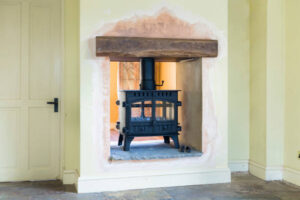If you step inside a cottage on a bitter winter day, odds are high that a stone fire surrounds waiting to greet you, joyfully snapping and hissing. It’s impossible to compete with the basic satisfaction of watching flames lap at split oak or birch. Something ancient flickers in those embers—cozy but energizing, primal yet homely. Why do people still swear by wood fireplaces when modern warmers exist? There’s more here than meets the eye.

Let’s talk efficiency. Modern stoves point their nose at the smokey behemoths of yesteryear. Double-walled stoves take in chilly air, heat it, and send it swooshing up again—trapping more heat for your living room rather than letting it dart up the chimney. Gone are the days of feeding the fire like an unpaid intern; newer models sip logs, employing ingenious air systems to extract the juice from your timber. No more cold in the morning while you poke damp coals, lamenting your life choices.
Atmosphere isn’t just a lighting technique you pick up from home remodeling shows. Something about wood burning stoves lends a room backbone and spirit. There’s the performance of making a fire—carefully piling kindling, hearing that first optimistic crackle, and relishing in a warmth you produced. People gravitate to it like moths, mugs in hand, stories flowing. That’s not a friendship you’ll build with a radiator.
Let’s not skirt around the obvious question: “Does it take work?” Sure. Chop, split, stack, dry. If your only experience with logs is a novelty Yule television channel, you could find the commitment tough. But cutting wood can chase away the blues, a cathartic exercise somewhere between meditation and battling a tough beast. There’s genuine joy in swinging an axe and properly piling a pile for winter. Plus, you’ll build arms that could scare even the haughtiest squirrel.
People get apprehensive about smoking and laws. Truth, new stoves and properly cured wood cut a large bite off of pollution. Check your area’s requirements, choose certified appliances, and you’re golden. Refrain from burning painted or treated lumber unless you prefer the aroma of headaches.
One thing you’ll notice, after a while, is how a decent stove tethers you to the seasons. Stacking wood in October, feeding the fires in January, watching the last log smoulder as spring birds whistle. The ritual marks time. The fire isn’t simply background; it’s a witness to your year’s stories.
Wood burning stoves are more than simply a nostalgia trip. They’re a patchwork of tradition, hands-on fulfillment, discussion, and—if you’re lucky—a little bit of joy. So if you ever find yourself cold on a February morning, imagine the pleasure of a crackling stove. There’s nothing quite like it to make a house feel like home.